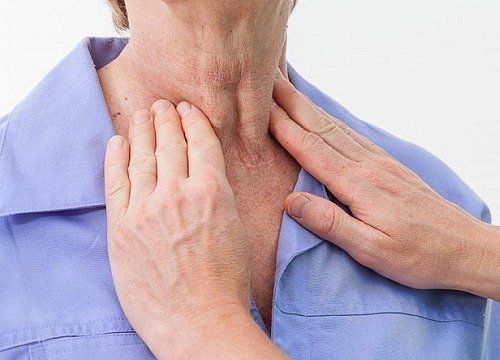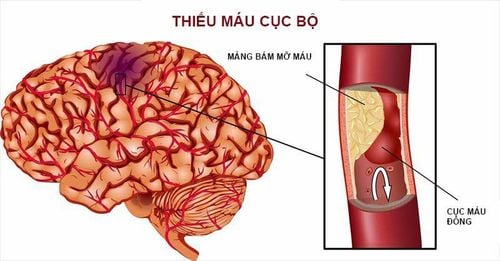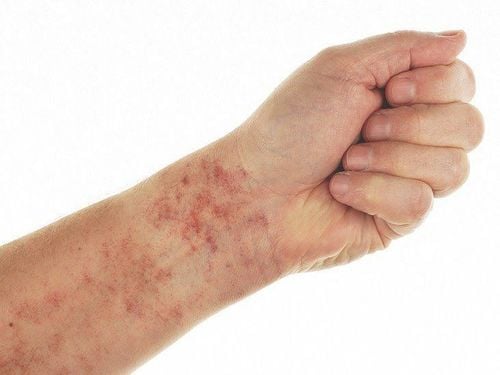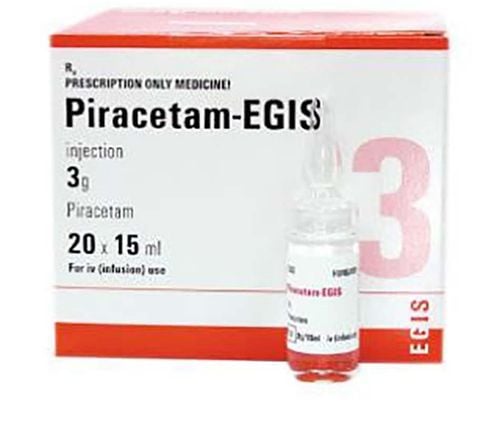This is an automatically translated article.
The article was professionally consulted by a neurosurgeon, Department of General Surgery, Vinmec Central Park International General Hospital.Cerebrovascular accident includes: cerebral infarction and hemorrhage in the brain, meninges. This is the leading cause of death in Vietnam and the world. Leaving many sequelae and costly treatment.
Cerebral infarction: accounting for about 80% of strokes, is a condition in which a part of the brain is interrupted or severely reduced, causing that area of the brain to be deprived of oxygen and nutrients, due to ischemic nerve cells. Cerebral - meningeal hemorrhage: About 20% of strokes, due to rupture of blood vessels flowing into the parenchyma or ventricles, compressing healthy brain cells.
Spontaneous subarachnoid hemorrhage (subarachnoid hemorrhage): mostly due to rupture of cerebral aneurysms.
1. Cerebral infarction and cerebral hemorrhage, meningoencephalitis: 2 types of cerebral stroke
Cerebral stroke is a syndrome characterized by an acute sudden loss of brain functions (usually localized) that results in a lack of oxygen and nutrients in that area of the brain, persists beyond 24 hours, or dies before 24 hours. Without oxygen to the brain, within a few minutes, brain cells will die. Areas of brain cells that are severely damaged or spread can cause death for patients or leave severe sequelae of disorders in movement, cognition, language, and vision.
Brain stroke is divided into 2 types:
Cerebral infarction (cerebral ischemia): accounting for 80% of strokes, occurs when a blood vessel supplying the brain is blocked by a blood clot, a blood clot, or a blood clot. Atherosclerotic stenosis causes areas of necrosis and cerebral ischemia. Cerebral - meningeal haemorrhage: Accounts for 20% of strokes, occurs due to rupture of the arterial wall causing blood to flow into the brain parenchyma or ventricles, commonly due to hypertension, amyloidosis or rupture. Cerebral vascular malformations, MoyaMoya disease... Meningeal bleeding or subarachnoid hemorrhage: due to rupture of cerebral aneurysms Currently, people with stroke tend to be younger. Part of it is due to lifestyle changes such as sedentary activities, working with high pressure and the occurrence of vascular diseases such as hypertension, diabetes, obesity, dyslipidemia . The rest is due to the development of increasingly more accurate diagnostic means.
2. Causes of cerebral infarction and cerebral hemorrhage
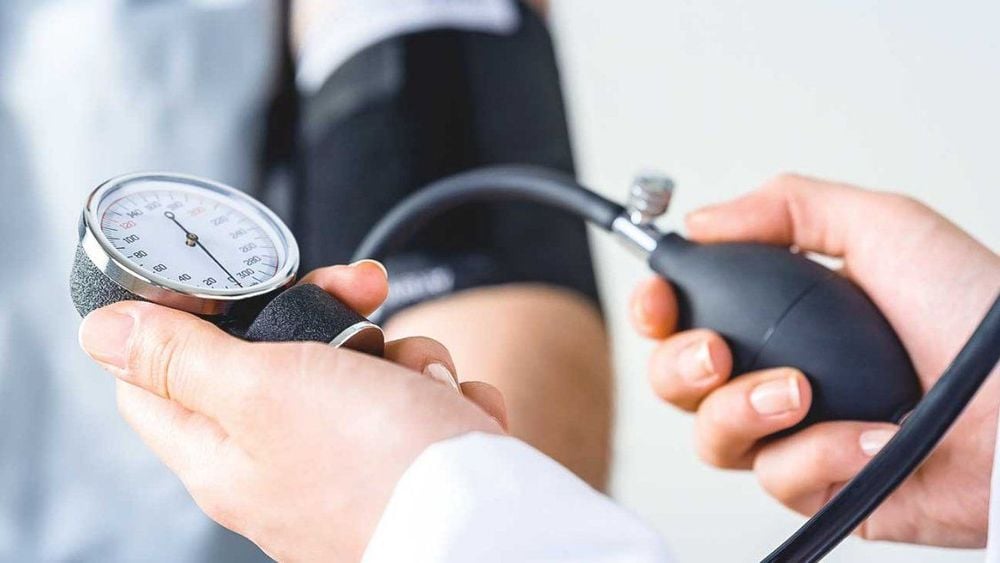
Tăng huyết áp có thể là nguyên nhân dẫn đến nhồi máu não và xuất huyết não
2.1 Causes of cerebral infarction There are 5 main groups of causes of cerebral infarction:
Obstruction or narrowing of large arteries Injury to small arteries is common in patients with hypertension and diabetes. Caused by cardiovascular diseases such as arrhythmia, valvular stenosis, heart failure ... facilitate the formation of blood clots going to the brain. Other vascular diseases with a high probability of forming blood clots such as coagulopathy, blood cell disease, congenital abnormalities of blood vessels. In about a quarter of cases, no cause can be found. 2.2 Causes of hemorrhagic brain-meninges Hemorrhage of brain parenchyma, basal ganglia or ventricles:
High blood pressure puts excessive pressure on the damaged vessel walls due to atherosclerosis. Patients taking anticoagulants or blood thinners have an increased risk in the hemorrhagic stroke group. An arteriovenous malformation (AVM) is an abnormal anastomosis between an artery and a vein. Moya moya disease
Meningeal hemorrhage or subarachnoid space hemorrhage:
A type of stroke that occurs when a blood vessel on the surface of the brain bursts, resulting in blood flowing into the subarachnoid space and the base of the skull. 85% of spontaneous subarachnoid hemorrhage results from rupture of an aneurysm.
3. The group of subjects at high risk of cerebral infarction and hemorrhage in the brain and subarachnoid space

Béo phì làm tăng nguy cơ mắc các bệnh tim mạch
Arterial hypertension: High blood pressure is a risk factor for stroke. When blood pressure is high, the walls of blood vessels are more susceptible to damage due to the stronger blood pressure. High blood pressure also increases the permeability of the vascular wall to blood lipoproteins, thereby promoting the development of atherosclerosis and the formation of strokes.
Diabetes: Diabetes increases the risk of ischemic stroke. Good treatment of diabetes will reduce the likelihood of ischemic stroke.
Heart diseases: Many heart diseases can increase the risk of ischemic stroke including atrial fibrillation, endocarditis, mitral stenosis, large-scale myocardial infarction, cardiomyopathy, atrial septal defect, bulging left and right atrium.
Hyperlipidemia: Hyperlipidemia increases the risk of atherosclerosis. Therefore, to prevent stroke, patients must always keep blood lipids at a normal level.
Smoking: Smoking increases the risk of cerebral infarction. The ingredients in tobacco reduce the concentration of HDL in the blood, causing damage to the artery walls, facilitating the development of atherosclerosis.
Alcoholism: Alcoholism increases the risk of acute or chronic alcohol poisoning - risk factors for brain stroke.
Transient ischemic stroke and history of stroke: Transient ischemic stroke must be well diagnosed and treated to prevent true ischemic stroke. The more times it occurs, the higher the chance of having an ischemic stroke. Patients with a history of stroke have an increased risk of recurrence, and that probability is higher than the occurrence of transient ischemic attack.
Obesity: Obesity increases the risk of cardiovascular diseases and as such can be a secondary factor in ischemic stroke through heart disease.
Carotid artery stenosis: Carotid atherosclerosis is one of the main causes of cerebral infarction in clinical practice. The inner layer of the blood vessel wall is damaged, creating favorable conditions for platelet adhesion. From there, the coagulation factors of platelets and plasma are mobilized to bind platelets and red blood cells, causing gradual embolism.
4. Stroke warning signs
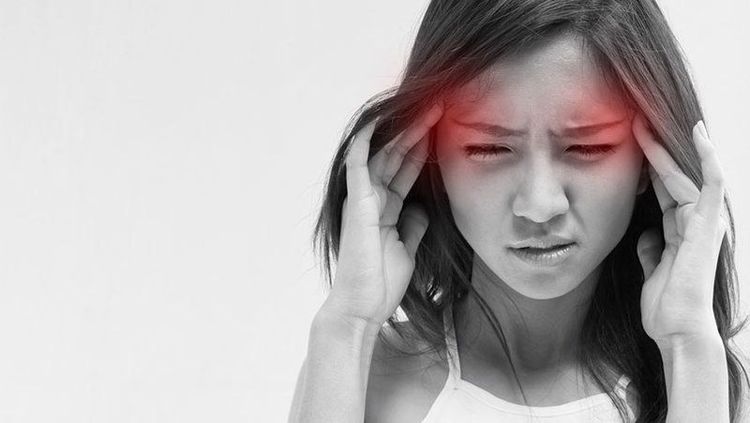
Chóng mặt, đau đầu có thể là dấu hiệu cảnh báo đột quỵ
Symptoms such as dizziness, headache, weakness in limbs, distorted mouth, slurred speech, coma, convulsions... are warning signs of stroke.
When seeing the above signs, it is necessary to bring the patient to the hospital early for timely examination and treatment. If the treatment window is exceeded, the patient may develop complications leading to severe disability.
If the patient has signs of FAST (English): distorted mouth, weak limbs, change in voice, immediately go to the hospital for timely emergency.
While waiting for the ambulance, if the patient is awake, lie on the healthy side, with the head raised slightly. Do not give the patient anything to eat or drink. Check the airway to remove foreign bodies or wipe away sputum from the mouth that can make breathing difficult. If the patient is paralyzed, when transporting, need help and tilt to the healthy side. If the patient does not have a pulse or stops breathing, perform chest compressions (80-100 times a minute) until the heart beats again.
>> See more: Nattou Ichou health food by Pharmacist, Master Pham Thi Kim Dung - Pharmacist Mixing drugs - Faculty of Pharmacy - Vinmec Times City International Hospital
5. Prognosis and complications of the disease
5.1. Prognosis The mortality rate from this disease is decreasing. Accordingly, more than 75% of patients survive the first year after the first stroke, and more than half survive 5 years.
People who have had an ischemic stroke have a better chance of survival than people who have had a hemorrhagic stroke.
Hemorrhagic-meningeal stroke causes many bad effects on the brain such as destruction of brain cells, increased intracranial pressure and vasospasm. However, many studies show that hemorrhagic stroke survivors have a greater chance of regaining function than ischemic stroke.
5.2. Complications of the disease Physical weakness and often accompanied by pain and spasticity are common complications of the disease.
Depending on the severity of the disease, determine if these impairments affect the ability to walk, get up from a chair, feed yourself, write or use a computer, drive a car, and many other activities. or not.
6. Stroke Prevention
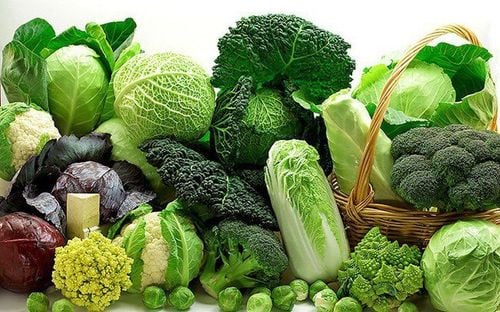
Chế độ ăn uống nhiều rau xanh tốt hơn cho tim mạch
Treat the cause: Diseases such as hypertension, diabetes, cardiovascular disease, dyslipidemia need to be controlled. Patients need periodic re-examination and treatment under the guidance of medical staff. Reasonable diet: Patients need to reduce fat, reduce salt (high blood pressure), reduce starch, sugar (DM). Instead, increase eating more green vegetables, exercise 30 minutes a day, stop smoking, alcohol, avoid obesity. When there are signs of a stroke, the patient should be hospitalized immediately. Currently, Magnetic Resonance Imaging - MRI/MRA is considered a "golden" tool to screen for brain stroke. MRI is used to check the condition of most organs in the body, especially valuable in detailed imaging of the brain or spinal nerves. Due to the good contrast and resolution, MRI images allow to detect abnormalities hidden behind bone layers that are difficult to recognize with other imaging methods. MRI can give more accurate results than X-ray techniques (except for DSA angiography) in diagnosing brain diseases, cardiovascular diseases, strokes,... Moreover, the process MRI scans do not cause the side effects seen in X-rays or computed tomography (CT).
Vinmec International General Hospital currently owns a 3.0 Tesla MRI System, which is equipped with state-of-the-art equipment by GE Healthcare (USA) with high image quality, allowing for a comprehensive assessment, without omitting the injury without leaving any damage. and reduce shooting time. Silent technology helps to reduce noise, create comfort and reduce stress for the client during the shooting process, resulting in better image quality and shorter imaging time. With the state-of-the-art MRI system With the application of modern methods of cerebral vascular intervention, a team of experienced and well-trained neurologists and radiologists, Vinmec is a prestigious address for stroke risk screening and screening. reliable goods.
In the past time; Vinmec has successfully treated many cases of stroke in a timely manner, leaving no sequelae: saving the life of a patient suffering from 2 consecutive strokes; Responding to foreign female tourists to escape the "death door" of a stroke;...
Please dial HOTLINE for more information or register for an appointment HERE. Download MyVinmec app to make appointments faster and to manage your bookings easily.




